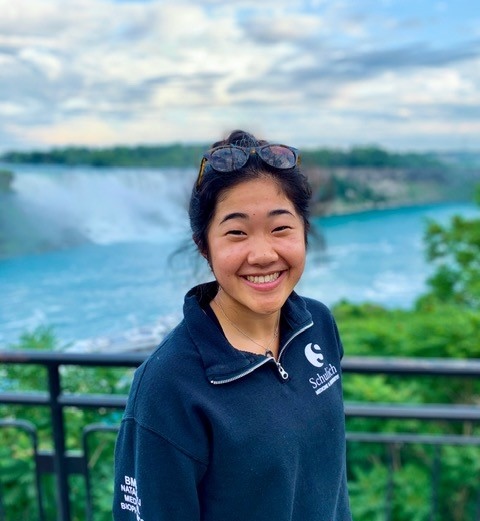- Home
- Research
Research Projects
Current
Early Sepsis Detection and Monitoring
Early Sepsis Detection and Monitoring
Sepsis, one of the leading causes of death worldwide, is an overreaction to infection which disproportionately affects vulnerable and low-resource populations. Since early intervention is crucial for survival, Rasa's primary research is focused on developing frugal approaches for early sepsis recognition using optical spectroscopy.
Led by
| Rasa Eskandari |
|---|
|
|
Publications:
Eskandari, R., Milkovich, S., Kamar, F., Goldman, D., Welsh, D. G., Ellis, C. G., & Diop, M. (2025, March). Optical biomarkers for sepsis-related microcirculatory impairment. In Optical Tomography and Spectroscopy of Tissue XV (Vol. 13314, pp. 146-148). SPIE.
Wearable Near-infrared Spectroscopy for Hemodynamic Monitoring in Low Resource Settings
Wearable Near-infrared Spectroscopy for Hemodynamic Monitoring in Low Resource Settings
Led by
| Saeed Samaei |
|---|
|
|
Publications:
Hyperspectral Time-Resolved Near-infrared Spectroscopy for Cerebral Metabolism Monitoring
Hyperspectral Time-Resolved Near-infrared Spectroscopy for Cerebral Metabolism Monitoring
Optical spectroscopy is a promising neuromonitoring technique due to its portability, safety, and sensitivity to blood oxygenation and metabolism; however, brain monitoring in adults is challenging due to the thickness of their scalp/skull layers. Natalie is currently developing an optical spectroscopy device that can accurately isolate the brain metabolism signal without contamination by the extracerebral tissue.
Led by
| Natalie Li |
|---|
|
|
Publications:
Time-Resolved Near-infrared Spectroscopy and Diffuse Correlation Spectroscopy for Daily Cerebral Monitoring in the ICU
Time-Resolved Near-infrared Spectroscopy and Diffuse Correlation Spectroscopy for Daily Cerebral Monitoring in the ICU
Led by
| Farah Kamar |
|---|
|
|
Publications:
Hyperspectral Near-infrared Spectroscopy for Addressing Skin Pigmentation Bias in Oxygenation Monitoring
Hyperspectral Near-infrared Spectroscopy for Addressing Skin Pigmentation Bias in Oxygenation Monitoring
Melanin, the main pigment within the human skin, is widely known to introduce bias into tissue-oxygenation measurements made by commercial near-infrared spectroscopy (NIRS) devices. As clinical practices and standards are determined by reference values obtained from lighter-skinned patients, this can lead to delayed treatment outcomes in racialized patient populations. Sophie's work focuses on the validation of a hyperspectral NIRS approach for determining tissue oxygenation more accurately, regardless of skin tone.
Led by
| Sophie Niculescu |
|---|
|
|
Publications:
Past
Brain Monitoring in Preterm Infants
Brain Monitoring in Preterm Infants
In Canada, 8% of births occur prematurely. Preterm infants born with very low birth weights are at a high risk of neurodevelopmental impairment: 5-10% of these infants develop major disabilities such as cerebral palsy - a permanent movement disorder - and 40-50% show other cognitive and behavioural deficits. Although numerous factors influence the occurrence of brain injury, fluctuations in cerebral blood flow (CBF) are believed to play a significant role due to the immaturity of the cerebral vascular system.
The newborn brain is therefore vulnerable to periods of low CBF which can impair energy metabolism and ultimately cause irreversible brain damage. Surprisingly, in today’s neonatal intensive care unit (NICU) there is no standardized method of cerebral monitoring.
To address this issue, our group (Diop an St Lawrence Lab) has developed a unique optical brain monitor. NNeMo, the Neonatal NeuroMonitor, is a non-invasive cerebral monitor that provides real-time measurements of tissue oxygen saturation, CBF, and oxygen metabolism in preterm infants, at the bedside. NNeMo utilizes near-infrared optical techniques, which have proven extremely safe and cost-efficient, to quantify physiological changes in the developing brain [1]. NNeMo is currently being implemented in the NICU at Victoria Hospital. It is our goal to provide clinicians with greater insight into hemodynamic events that precede brain injury. This information could enable clinicians to make adjustments to patient management to avoid brain injury, ultimately improving long-term outcome in preterm infants.
Led by
| Ajay Rajaram |
|---|
|
|
Publications:
Detecting Treatment Failure in Rheumatoid Arthritis with Time-Resolved Near-Infrared Imaging
Rheumatoid arthritis (RA) is a chronic inflammatory joint disease whose management hinges on successful early treatment. Despite this, current monitoring methods—such as clinical examination—require 3–6 months to detect initial treatment failure experienced by 1 in 3 RA patients. Considering that this delay in effective treatment places patients at risk of irreversible joint damage and unnecessary disease proliferation, there is a need for more sensitive approaches that can detect treatment failure much earlier than current methods.
To this end, we are developing near-infrared spectroscopy and imaging techniques which may detect early treatment failure. Currently investigated approaches include quantification of joint blood flow with dynamic contrast-enhanced spectrscopy and characterizing optical properties of the joints through cost-effective time-resolved near-infrared imaging based on structured illumination and compressed sensing.
Led by
| Seva Ioussoufovitch |
|---|
|
|
Former Team Members:
Ajay Rajaram
Publications:
Recovering optical properties of brain tissue using hyperspectral continuous-wave near-infrared spectroscopy (hCW-NIRS)
In this project, we will developed a realistic model of the infant head that included extracerebral layers (scalp and skull), cerebrospinal fluid, grey matter, and white matter. The model was generated from a 3D MRI image of an infant head and was used to test several fitting algorithms. Optical properties was assigned to each tissue type, using published literature values, and in silico experiments were conducted to generate data that closely mimic in vivo measurements. This data set was then used to test different algorithms that are currently used to estimate tissue optical properties from NIRS measurements. Notably, we investigated several approaches for recovering tissue optical properties from hyperspectral (i.e., broadband) CW-NIRS data.
Current Team Members:
| Naomi Abayomi |
|---|
|
|
Publications:
Using Hyperspectral Near Infrared Spectroscopy and Diffuse Correlation Spectroscopy to Monitor the Microvascular Effects of Phenylephrine in vivo
Phenylephrine is commonly administered intravenously to increase blood pressure, but its effects on the peripheral (i.e., skeletal muscle) and cerebral (i.e., brain) microcirculation are controversial. Despite its widespread application, studies using cerebral oximetry have associated this drug with oxygen desaturation in the brain. Laura's MSc work focused on investigating the microcirculatory effects of phenlypehrine using hyperspectral near-infrared spectroscopy and diffuse correlation spectroscopy.
Led by
| Laura Mawdsley |
|---|
 |
Publications:
Using Hyperspectral TR-NIRS to measure adult cerebral oxygen saturation
Measuring adult oxygen saturation is more difficult than in neonates due to the increased skull thickness, which results in high absorption. By using Hyperspectral TR-NIRS, we hope to increase the accuracy and sensitivity to the adult brain. Monte-Carlo experiments were conducted to investigate the sensitivity of late-photons hyperspectral near-infrared spectroscopy (Lp-hNIRS) for assessing cerebral oxygenation (ScO2) in adults. Results suggest that Lp-hNIRS provides more accurate estimates of ScO2 than multispectral time-resolved NIRS.
Current Team Members:
| David Cohen | Natalie Li |
|---|---|
|
|
|



















